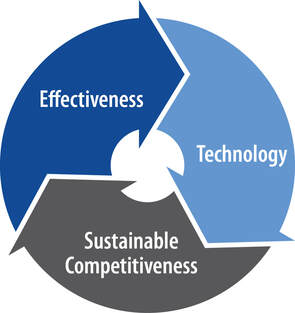 As applied to organizational improvement, system thinking is grounded in the following fundamental principles:
System thinking takes a birds-eye view of how the firm is employing the resources it has invested in in delivering value to its customers. System thinking posits that a firm’s resources do not operate independently, but work together in an interconnected and interdependent fashion, not unlike the musicians in a world class symphony. System thinking focuses on aligning and synchronizing the flow of activities among and between each resource as they collaboratively work together to create and deliver ever-increasing customer value. When should we use a system thinking approach? Any organization interested in improving its operational and financial performance should employ system thinking. System thinking is a different way of viewing and thinking about how your organization creates value for the customers that buy your products and/or services. In a business environment, system thinking focuses on delighting the customer by significantly improving flow in the value creation stream in your firm. The focus on customer value creation distinguishes system thinking from conventional cost-driven management approach. Simply stated, cost-driven management breaks down the organization into its individual resources, products and services, then focuses on driving down or optimizing the cost of each resource in isolation. Unfortunately, this approach not only results in sub-optimal system performance but also ignores the only part of the system which generates cash inflows and future growth, the customer. System thinking as a best practice focuses on aligning and synchronizing the activities of all resources in a system. In the process, waste is eliminated, lead times are shortened, labour is freed up, capacity is released, costs are reduced, operational and financial performance is improved, and the firm becomes increasingly competitive. This approach will also effectively reduce a firm’s carbon footprint by reducing the production of greenhouse gases through the elimination of wasteful non-value adding practices. Organizations are constantly facing new challenges, and the future is unknowable. The current pandemic adds additional layers of complexity and volatility into an already challenging hypercompetitive marketplace. As a manager or business owner it can be overwhelmingly difficult to determine what the next step should be for your business in this increasingly complex environment. System thinking helps clarify and simplify the way forward. If your organization is struggling with any of the following issues, system thinking can help.
BKW’s Business Alignment Program BKW can help you resolve the challenges you are facing, and help you insulate your firm from the myriad of complex challenges you are faced with every day. Our Business Alignment Program based in system thinking is a proven approach. It will help you to identify hidden opportunities, release untapped capacity, and improve your business’ resiliency. If you are a small to medium sized manufacturing firm and anything you’ve read above resonates with you, we can help and would like to hear from you. Please click the link below to provide us with some preliminary information and BKW team member will contact you to discuss how we can help. Click here to contact the BKW team. Comments are closed.
|


 RSS Feed
RSS Feed